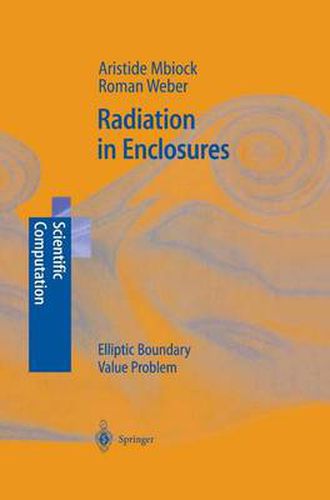Readings Newsletter
Become a Readings Member to make your shopping experience even easier.
Sign in or sign up for free!
You’re not far away from qualifying for FREE standard shipping within Australia
You’ve qualified for FREE standard shipping within Australia
The cart is loading…






This title is printed to order. This book may have been self-published. If so, we cannot guarantee the quality of the content. In the main most books will have gone through the editing process however some may not. We therefore suggest that you be aware of this before ordering this book. If in doubt check either the author or publisher’s details as we are unable to accept any returns unless they are faulty. Please contact us if you have any questions.
During the last half century, the development and testing of prediction models of combustion chamber performance have been an ongoing task at the International Flame Research Foundation (IFRF) in IJmuiden in the Netherlands and at many other research organizations. This task has brought forth a hierarchy of more or less standard numerical models for heat transfer predictions, in particular for the prediction of radiative heat transfer. Unfortunately all the methods developed, which certainly have a good physical foundation, are based on a large number of extreme sim plifications or uncontrolled assumptions. To date, the ever more stringent requirements for efficient production and use of energy and heat from com bustion chambers call for prediction algorithms of higher accuracy and more detailed radiative heat transfer calculations. The driving forces behind this are advanced technology requirements, the costs of large-scale experimen tal work, and the limitation of physical modeling. This interest is growing more acute and has increased the need for the publication of a textbook for more accurate treatment of radiative transfer in enclosures. The writing of a textbook on radiative heat transfer, however, in ad dition to working regularly on other subjects is a rather difficult task for which some years of meditation are necessary. The book must satisfy two requirements which are not easily reconciled. From the mathematical point of view, it must be written in accordance with standards of mathemati cal rigor and precision.
$9.00 standard shipping within Australia
FREE standard shipping within Australia for orders over $100.00
Express & International shipping calculated at checkout
This title is printed to order. This book may have been self-published. If so, we cannot guarantee the quality of the content. In the main most books will have gone through the editing process however some may not. We therefore suggest that you be aware of this before ordering this book. If in doubt check either the author or publisher’s details as we are unable to accept any returns unless they are faulty. Please contact us if you have any questions.
During the last half century, the development and testing of prediction models of combustion chamber performance have been an ongoing task at the International Flame Research Foundation (IFRF) in IJmuiden in the Netherlands and at many other research organizations. This task has brought forth a hierarchy of more or less standard numerical models for heat transfer predictions, in particular for the prediction of radiative heat transfer. Unfortunately all the methods developed, which certainly have a good physical foundation, are based on a large number of extreme sim plifications or uncontrolled assumptions. To date, the ever more stringent requirements for efficient production and use of energy and heat from com bustion chambers call for prediction algorithms of higher accuracy and more detailed radiative heat transfer calculations. The driving forces behind this are advanced technology requirements, the costs of large-scale experimen tal work, and the limitation of physical modeling. This interest is growing more acute and has increased the need for the publication of a textbook for more accurate treatment of radiative transfer in enclosures. The writing of a textbook on radiative heat transfer, however, in ad dition to working regularly on other subjects is a rather difficult task for which some years of meditation are necessary. The book must satisfy two requirements which are not easily reconciled. From the mathematical point of view, it must be written in accordance with standards of mathemati cal rigor and precision.